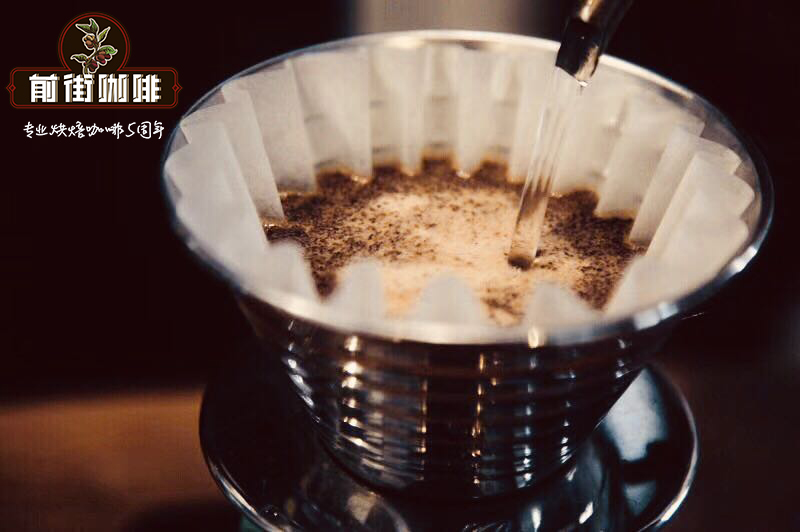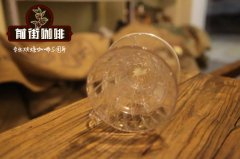Apart from Yega Xuefei, what other producing areas in Ethiopia? the whole introduction of Ethiopian coffee producing areas.

Professional coffee knowledge exchange more coffee bean information please follow the coffee workshop (Wechat official account cafe_style)
[Ethiopian coffee producing area]
There are nine major coffee producing areas in Ethiopia: Sidamo, Yegashefi, Hara, Gemma, Lim, Iruba, Gimbi (Lekanti), Tibby, and Bebeca. Among the nine major coffee producing areas in Ethiopia, the most famous are Yegashefi, Sidamo and Harald, and there are also small producing areas in the large producing areas, such as Cochel and Arica in the Yegashafi producing area, and then there are smaller village producing areas. The coffee plantation in Ethiopia is not obvious, so it is generally divided into large producing areas, small producing areas, village producing areas and washing plants.
Yejia Xuefei: 1800 Murray 2000 meters above sea level | Pastoral Coffee system |
Yega Xuefei is affiliated to the Sidamo region. Because of its unique flavor, rich and complex fruit aroma, it became popular almost overnight, causing Ethiopian coffee farmers to take pride in the flavor of their own coffee. So it was separated out separately. It has been a wetland since ancient times. The ancient saying "Yirga" means "settle down" and "Cheffe" means "wetland". In addition to the small town of Yega Xuefei, it also includes three by-product areas around Wenago, Kochere, Gelena and Abaya. Therefore, YirgacheffeA, Wenago A, Kochere An and Gelena/AbayaA will be more expensive than B of the same name in the new Yega Sheffield rating system.
Ethiopia Yirgacheffe Natural Boyefi G1
Sun Yeri Bori Coffee Orchard
Country: Ethiopia
Production area: Kochere, Polly Village
Treatment: insolation
Variety: native species (Heirloom)
Altitude: 1900-2000 m
Baking degree: medium and shallow baking
Flavor description: dried peach, sweet orange notes and orange fruit, cocoa, rich acidity, full aroma, smooth and delicate
Brewed in 89 degree water, it has strong aromas of berries and fruit wines. At first, strong aromas of strawberries and blueberries are accompanied by tropical fruit aromas such as passion fruit and mango, with aromas of apricot, peach and grape juice in the middle. Floral, peach and berry aromas run through the whole taste buds, solid and juicy.
Sidamo: 1400 meters above sea level: 2200 meters above sea level | Pastoral coffee system |
Sidamo, located in the southernmost Ethiopian plateau between 4600 and 7200 feet above sea level, just south of the capital, is usually sweet and preferred by most people.
The flavor is similar to Yega Xuefei, exquisite washing or sun-drying Sidamo, the same fragrance of flowers and oranges, the price is as good as Yega Xuefei. The varieties in the two producing areas are similar, with medium-sized beans but also small seeds of dwarf plants, which farmers often sell separately. The common varieties here are Kurmie, which has poor disease resistance; Wolisho;, which is tall and robust; and Deiga, which is of medium tree shape.
ETHIOPIA,SIDAMO,Drima Zede
Ninety + candles
Guojia: Ethiopia Ethiopia
Production area: 90+SNNP, Sidama (Sidamo)
Sea pull: 1750-2000 meters
Treatment method: sun treatment method Natural Process
Variety: Ethiopian native species Ethiopian Heirloom
Baking degree: shallow baking Light Roast
Wind: floral aromas, nectarines, tropical fruits, blackberries, blueberries, plums, cream, cinnamon
Acidity: medium to high
Harald: 1500-2100 m above sea level | Pastoral coffee system |
Located in the eastern highlands of Ethiopia, it is also an ancient trade center and an important Islamic shrine (at its cultural peak in the 15th and 16th centuries), connecting East Africa and the Arabian Peninsula. Its geographical location and its importance as an economic and cultural center made it prominent in the earliest transportation and trade of coffee, injecting a sense of historical solemnity into coffee.
Harald coffee trees grow at an altitude of about 1500-2100 meters above sea level. they were still wild on the slopes before the first century. When baked, they will have a strong smell of chocolate, wild taste with moderate acidity and rich texture, is a very typical mocha flavor. Good Harald beans with jasmine, and similar to the aftertaste of fermented wine, today's Harald still uses the traditional sun method to deal with raw beans. But it is generally difficult for us to drink Harald because it has long been bought by Arab tycoons in the Gulf countries.
Djimmah: 1340m above sea level; 1,830m above sea level | Forest-semi-forest coffee system |
Gemma Coffee grows in the Illubabor and Kaffa regions of Ethiopia, between 1340 and 1830 meters above sea level, and produces and exports about 60, 000 tons of coffee each year. Djimmah is also known as JimmaCoffee.
Gemma's coffee tends to grow between 1340 and 1830 meters above sea level, which provides an ideal climate for coffee growth, and plants can also be protected by forest trees from the noon sun, which also helps maintain moisture in the soil. The town of Gemma is actually quite small, but Gemma coffee accounts for most of Ethiopia's coffee exports, accounting for almost 50%.
[Gemma, Ethiopia]
Country: Ethiopia
Producing area: Gemma
Altitude: 1800m
Treatment: insolation
Variety: native species
Dry aromas of jasmine, with aromas of roasted peanuts, wet aromas of fermented wine, acidity of lime, lemon, citrus and carambola, sweet berries in the middle, and some grapefruit peel and black tea at the end.
Limu: 1,850 meters above sea level in Murray 1900m | Forest / semi-forest coffee system |
In Lim, local coffee farmers grow it in a 100% organic way. Soil is Vertisols soil. Plant between 1850 and 1900 meters above sea level.
The output of lim is low, and it is mainly exported to Europe and the United States. It is not easy to buy in China in the past, but it is very popular in Europe and America, and its fame is second only to Yega Xuefei. Lim's taste spectrum is different from that of Sidamo and Yega Chuefei: its body is thinner, and its floral and citrus aromas are inferior to those of Yega and Sidamo, but with a hint of grass and cocoa and sandalwood.
Ethiopian Lim G2 washing
Ethiopia Washed Limu G2
Country of origin: Ethiopia (Ethiopia)
Producing area: Limu producing area
Variety: Heirloom (native)
Producer: local coffee farmers in Limu
Altitude: 1850 Murray 1900m
Grade: washing G2
Harvest time: October of each year to February of the following year
Soil: Vertisols soil
The aroma of fresh grass and sour apples thickens the taste of coffee, with an aftertaste of cocoa and berries.
Yilu Babo (bulk commercial bean producing area): 1350 above sea level, Mueller 1850 | Forest / semi-forest coffee system |
This area is located in the west of Ethiopia, bordering Sudan, and is the most convenient producing area in the west. the complexity of coffee gene is only second to that of Kafa forest, beans are obviously larger than those of Yegashifi and Sidamo, low acidity, good viscosity and balanced flavor. Most of the coffee here is transported to Jinma to be mixed, rarely sold independently.
Jinbi and Leikengti (major commercial bean producing areas): 1500 Murmur1800 above sea level | Forest / semi-forest coffee system |
There are sun-washed and water-washed beans in this area, long-bodied beans similar to Hara, and a few boutique grades are quite popular in Europe and the United States. Most of the Hara, known as the poor, has a sour and fruity flavor due to Yilu Babo, with a bright flavor.
Tiebi and Bebeca (major commercial bean producing areas): 500m above sea level; 1900m above sea level | Pastoral / forest / semi-forest coffee system |
The two producing areas are very close. Tiebi has an enterprise-managed coffee plantation in the north of Bebeca. In recent years, it has promoted the pastoral system and increased farmers' income, with an annual output of about 3000 tons. Both places have wild coffee, the yield is not high, the flavor is very different from Hara and Yega snow coffee, low acidity is the biggest feature, suitable for formula beans, sun and water washing.
Tana Lake (alternative production areas): 1840 meters above sea level | Forest system |
Monastery coffee, the annual output of the surrounding forest coffee is very small, less than 10 tons, in fact, can not be called the producing area, the lake area is full of Orthodox monasteries, churches, religious murals and myths, creating the most "divine" coffee in the world.
European monastic academics opened up a local coffee growing industry, which was later run by coffee communities or cooperatives in villages around the town. There are no special plantations here, and coffee trees are naturally scattered in the forest and countryside. During the harvest season, the Ethiopian Coffee Trading Company goes to town to buy coffee beans collected by farmers.
Related recommendation: Ethiopia YCFCU cooperative several characteristic varieties recommendation introduction flavor description
Important Notice :
前街咖啡 FrontStreet Coffee has moved to new addredd:
FrontStreet Coffee Address: 315,Donghua East Road,GuangZhou
Tel:020 38364473
- Prev

A list of the main producing areas of Ethiopian Coffee not only Yega Xuefei
Professional coffee knowledge exchange more coffee bean information please follow the coffee workshop (Wechat official account cafe_style) Ethiopia is known as the birthplace of coffee, it is a local custom, no matter how poor people's homes, they must have a coffee pot and a charcoal stove, why? Because coffee is something that local people think they have to make every day.
- Next

Antigua, Guatemala-Alpine volcanic beans | how to make Antigua coffee
For more information on coffee beans, please follow the coffee workshop (Wechat official account cafe_style) Guatemala, which has the best coffee growing environment in Central American countries, including the perfect combination of coffee growth height, fertile soil and coffee growing climate. The coffee produced in the Guatemala-Antigua region is the most well-known.
Related
- Does Rose Summer choose Blue, Green or Red? Detailed explanation of Rose Summer Coffee plots and Classification in Panamanian Jade Manor
- What is the difference between the origin, producing area, processing plant, cooperative and manor of coffee beans?
- How fine does the espresso powder fit? how to grind the espresso?
- Sca coffee roasting degree color card coffee roasting degree 8 roasting color values what do you mean?
- The practice of lattes: how to make lattes at home
- Introduction to Indonesian Fine Coffee beans-- Java Coffee producing area of Indonesian Arabica Coffee
- How much will the flavor of light and medium roasted rose summer be expressed? What baking level is rose summer suitable for?
- Introduction to the characteristics of washing, sun-drying or wet-planing coffee commonly used in Mantenin, Indonesia
- Price characteristics of Arabica Coffee Bean Starbucks introduction to Manning Coffee Bean Taste producing area Variety Manor
- What is the authentic Yega flavor? What are the flavor characteristics of the really excellent Yejasuffi coffee beans?

